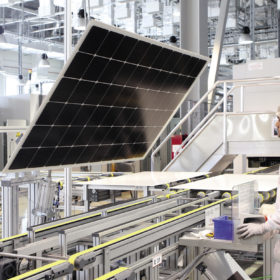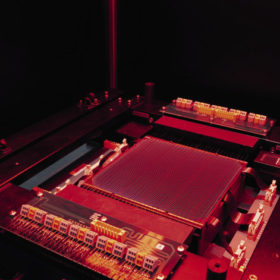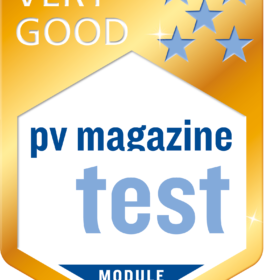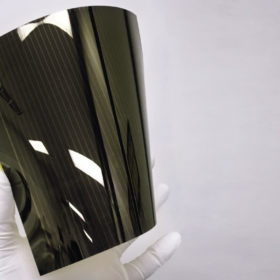Past and future glories
Since 2009, when production capacity expansions began to outstrip demand for the first time, prices all along the solar supply chain fell, and have continued to do so almost continuously ever since. Simon Price, CEO of Exawatt, argues that solar is no longer in the ‘cost reduction era,’ and is now entering its ‘performance driven era,’ in which the goal for manufacturers is high performance at an acceptable cost, rather than acceptable performance at the lowest cost.
The glue that binds HJT
The push towards higher-efficiency technologies drives innovation right across the supply chain. Long proven in the electronics industry, an electrically conductive adhesive (ECA) is now being deployed in heterojunction production, facilitated by new equipment.
Atmospheric deposition for compact passivation
High efficiency cell concepts like TOPCon are causing a rethink when it comes to production lines. Christian Buchner, the VP of Schmid’s Solar Business Unit, believes atmospheric pressure chemical vapor deposition is worth a second look.
Green and greener
Solar and other renewables are gathering pace as an alternative to heavily polluting fossil fuels – but they also require resources themselves, and produce both carbon emissions and waste during their life cycle. Here pv magazine presents an inventory of PV’s environmental footprint, and the efforts to improve it.
CIGS flexes for takeoff
Versatile CIGS modules are opening doors to a range of new applications that have the potential to change how we integrate solar energy into urban communities, according to Michael Powalla from the Centre for Solar Energy and Hydrogen Research Baden-Würtenberg (ZSW) and Rutger Schlatmann from the Helmholtz-Zentrum Berlin (HZB).
One side or two
Bifacial modules are here to stay. But even as manufacturers commit further capacities to two-sided module production spanning a whole range of technologies, there are still challenges to overcome, to fulfill predictions that bifacial will represent almost 40% of all modules produced inside the next decade. Flash testing conducted at the end of cell and module production presents one of these, and there is plenty of debate among equipment suppliers as to how this manufacturing stage should treat bifacial cells and modules.
High efficiency requires high quality cutting
There is a sense in the PV cell and module market at the mid stage of 2019 that the push towards high-efficiency cell architectures is accelerating. This makes the case for half-cut cells in a module more compelling, and the quality of the cut edge vital – argue laser process suppliers.
Polysilicon goes west
Slower demand from China in 2018 meant a bumpy ride for polysilicon producers worldwide. But the biggest players remain committed and are taking advantage of low electricity rates in western China to bring huge new capacities online, giving the market yet another shake-up. pv magazine caught up with polysilicon market analyst Johannes Bernreuter, Head of Bernreuter Research, for a look at the latest upstream developments.
pv magazine test Results from the first two years
The pv magazine test program was launched in July 2017. The test was designed to help investors in their module purchasing process, while at the same time allowing manufacturers to spot problems and improve their production processes. Fast forward to today and we have 16 products from 10 manufacturers covering five different module and cell types installed on the rooftop of Gsola’s facility in Xi’an China, having been tested and characterized in its lab. Among the 16 products, 14 were provided by manufacturers and two were selected directly from warehouses for reference. George Touloupas, Director of Technology and Quality at CEA, and Chi Zhang, Junior Engineer, Technology and Quality, at CEA delve into the valuable performance data.
Perovskites: Multiple attributes come together
Named after a Russian noble in the 19th century, perovskites have become a darling of the PV research community in recent years. And while there exist many doubters to its industrial outlook in solar applications, Ronn Andriessen, the Director of Solliance Solar Research, which operates facilities in Germany, the Netherlands, and Belgium, believes the perovskite family holds almost unlimited potential for the PV sector.










